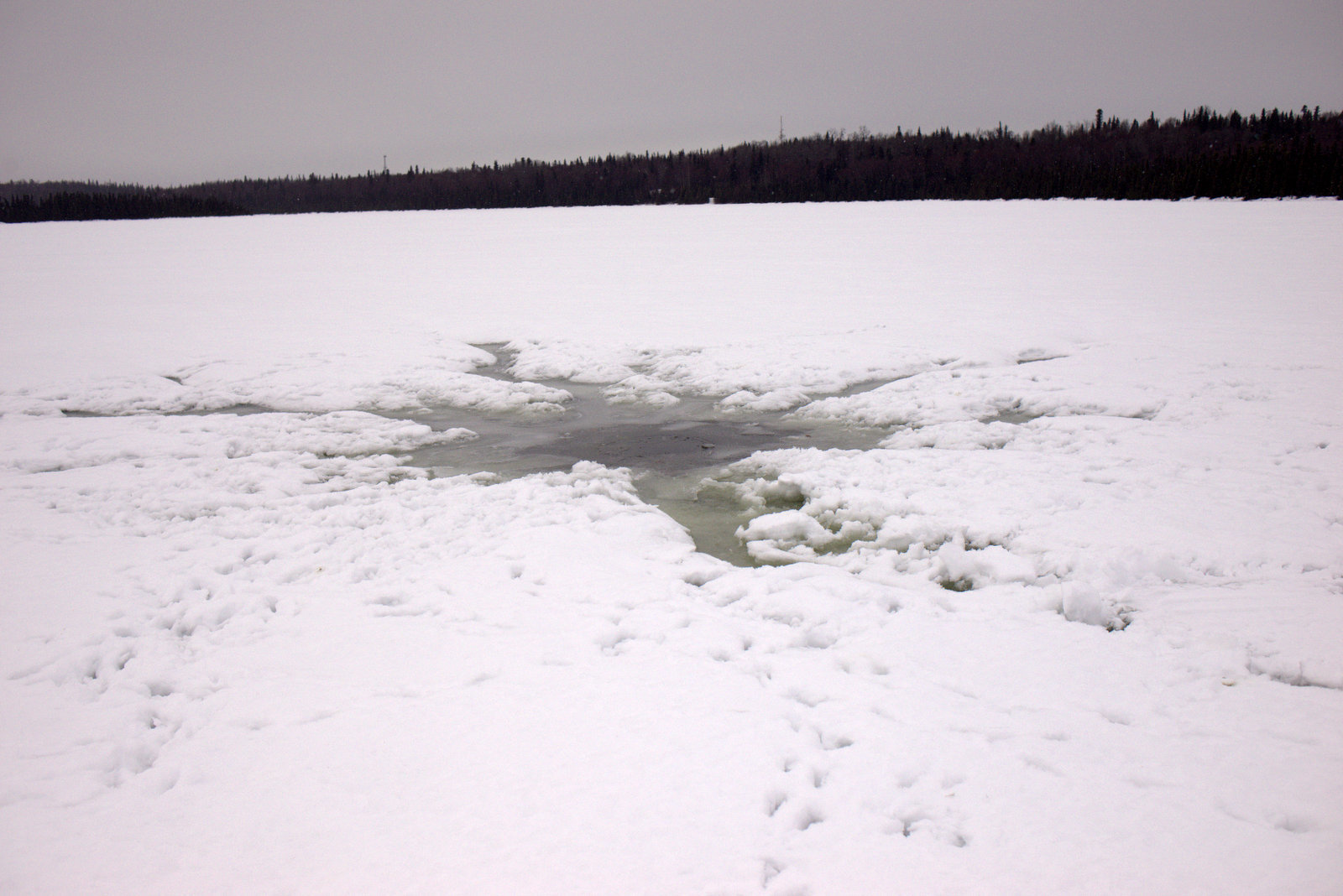Right next to the headquarters of the Kenai National Wildlife Refuge is a lake, cleverly named Headquarters Lake. With excellent views of the Kenai Mountains, the lake is very popular in the winter time with cross-country skiers. In addition to 7.5 miles of premier woodland ski trails, the perimeter (2.2 miles) of the lake is groomed for skate and classic skiing.
A couple weeks ago we had a good dumping of snow, about 6 inches over a couple of days. That Saturday, just after it stopped snowing, I decided to groom the lake. We have two styles of groomers: a roller and the Ginzu. The roller looks like a two-foot diameter culvert that rolls along behind the snowmachine compressing the snow. The Ginzu has a frame with retractable teeth that cut into the snow, break it up, and smooth it to a nice, corduroy surface.
After a good snowfall, I usually snowmachine around the lake to see how deep the snow is while checking for water overflow on the ice before grooming. However, that day I decided to skip the pre-grooming pass. The six inches of new snow should not be a problem for the roller, and I had just skied the day before without incident. After hitching up the roller, I was off. There were six to eight inches of fresh snow packing down nicely.
I was just coming up on the east end of the lake when I felt the snowmachine bogging down. Before even taking a look to see why, I hit the gas. A bit of speed will often get the machine on top of deep snow or over a stretch of overflow. Right after hitting the gas, I looked down to see water trailing the skis, and turned around to see a growing two-foot pile of slush in front of the roller. Oh no, overflow! I was stopped in my tracks.
Overflow is water on top of ice, and usually under snow, but how does it get there? As snow accumulates it presses down on the ice surface. Where weak spots occur in the ice sheet, water can percolate up and flood across the ice under the snow. While lake ice is being formed, thermal expansion and shrinkage is occurring, fracturing, cracking and weakening the ice. Methane gas from decomposing vegetation can create bubbles in the ice, weakening it. Overflow is a natural process of lake ice formation and very common in Alaska.
In a large overflow event you may see dark sunken areas or a dark spot with several arms coming out like tentacles. These are called spider holes and are often associated with large overflow events. While working on getting unstuck, I noticed a large spider hole about 200 feet away. The arms are created from water running out of the hole and under the snow in several directions. They are typically not dangerous to a skier or snowshoer, as they will be deterred by the large overflow before getting too close. As deep snow is an excellent insulator, overflow conditions may persist for weeks when the temperature is well below zero.
To investigate the forces at play, I wanted a rough estimate of the weight of the snow covering the lake. I was also curious of how much water came out of that spider hole. So a couple days later I went back to the lake and took several snow samples by removing all the snow from a one-square-foot area for weight and water content. I drilled several holes in the lake to measure ice thickness and water temperature. A rough area of the overflow was estimated by driving around on the snowmachine and identifying a rough perimeter.
The average snow depth at the time of the overflow was 18 inches. The average weight of snow covering one square foot of ice was 8.8 pounds. Multiplying this factor by the area of the lake equaled approximately 57 (+/- 15) million pounds of snow!
With snowshoes on and pulling a big sled, I arrived without incident at the spider hole. It was big compared to photos I found online. There was still a four-foot circle of open water in the middle. I didn’t see any bubbles coming up, but there were bubbles frozen in the surrounding ice, so gas bubbles could have been a factor weakening the ice. There were bird tracks all over, too — likely they enjoyed the temporary watering and bathing hole.
The area of overflow around the spider hole was approximately a half million square feet. If that area was flooded with 2.5 inches of water it would fill an Olympic swimming pool and then some. The ice thickness was 24 inches in all the holes I drilled and the depth was 5 feet. The water temperature was 35 degrees Fahrenheit.
The warm temperatures this last week have condensed the snow pack by more than half, greatly reducing its insulating capacity. With limited snow insulation, the overflow could freeze with a few cold days and set the lake back up for good skiing.
Mark Laker is an Ecologist with the Kenai National Wildlife Refuge. For ski conditions on Kenai Refuge trails, call our office at 262-7021 or find us athttps://www.facebook.com/kenainationalwildliferefuge.

